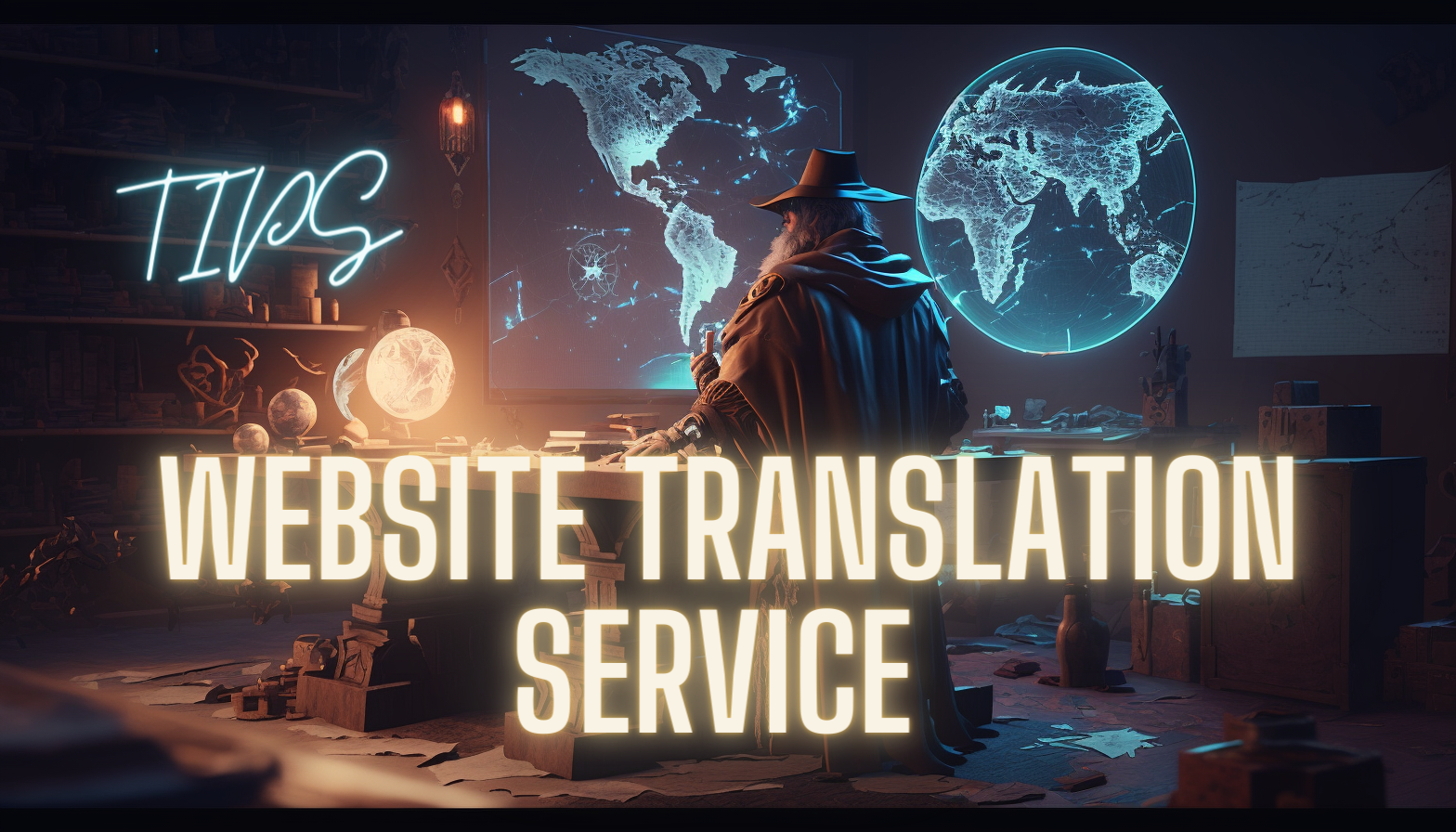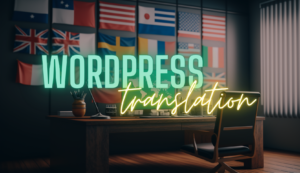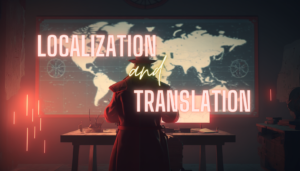As the internet continues to connect businesses with a global audience, website translation has become a critical aspect of online success. In today’s digital age, having a website in only one language can limit a business’s reach, preventing it from engaging with potential customers and clients who speak different languages. This is where website translation comes in.
Why is website translation important for businesses?
Website translation allows businesses to communicate with customers and clients who speak different languages, expanding their reach to new markets and increasing their customer base. By offering their website in multiple languages, businesses can create a personalized experience for their users, demonstrating a commitment to inclusivity and accessibility.
Additionally, website translation can help businesses establish their presence in new regions, allowing them to compete with local companies and gain a foothold in new markets. This can be especially important for businesses looking to expand globally, as it can help them build brand awareness and increase their revenue streams.
The challenges of website translation
While website translation offers many benefits to businesses, it also comes with its fair share of challenges. Website translation projects are complex and involve coordination among various teams with different goals and interests. The tools used by different teams, such as code, design tools, content management systems, and translation software, can also differ, which can create compatibility issues and result in outdated content or duplicate work.
Moreover, the dynamic nature of web pages, which are made up of various written and visual elements that need to be adapted to the target language, adds to the complexity of website translation. Businesses must also ensure that their website’s design, layout, and functionality are carefully considered when translating content, as subpar user experience can occur if not. Additionally, optimizing for local search is crucial to ensure foreign visitors can find the website.
Despite these challenges, website translation is a necessary investment for businesses looking to expand their reach and establish a global presence. In the following sections, we’ll dive deeper into the critical factors to consider when choosing a website translation service and how to navigate the challenges of website translation.
Tips 1: Criteria for choosing the Right Translation Company

Choosing the right translation company is crucial when it comes to website translation. There are a plethora of translation companies available in the market, making the selection process challenging. However, by following some critical tips, businesses can ensure they choose a company that can be trusted to complete the project accurately, within the deadline, and as per the requirements.
Firstly, businesses need to look for the right qualifications in a Language Service Provider (LSP). It is important to ensure that the translation company holds qualifications like ISO 9001, 17100, or 27001, which indicate that they meet the delivery and data protection standards. Additionally, the LSP should have a team of Subject Matter Experts (SMEs) who have experience in the client’s industry to ensure that the translation is technically correct and authentic.
Another critical aspect to consider is the Quality Assurance (QA) process. The LSP should have a QA process that involves double-checking translations to ensure the quality of the work delivered. The translation company should also have experience in translating for digital platforms.
The reputation, reviews, and references of the translation company should also be taken into account when making a selection. It’s essential to research the translation company’s reputation and read reviews and references to understand their level of customer satisfaction and the quality of their work.
By considering these factors, businesses can choose the right translation company for their website translation project.
Tips 2: Understanding the Translation Process
Website translation can be a complex process, and it is important to understand the steps involved to ensure a successful outcome. The translation process typically involves three main steps: content translation, website integration, and technical work.
Content Translation:
This is the first step in the process and involves translating the text on your website into the target language. It’s important to find a translator who is not only fluent in both the source and target languages but also has expertise in the subject matter. This is particularly important if your website includes technical or specialized language.
Website Integration:
After the content has been translated, it needs to be integrated into your website. This involves replacing the original text with the translated text and ensuring that it is properly formatted and aligned. It’s important to choose a translation company that has experience with website integration and can provide the necessary technical support.
Technical Work:
Finally, technical work is required to ensure that your website functions properly in the target language. This includes tasks such as testing links, ensuring that images are displaying correctly, and making sure that the website is optimized for search engines.
Human translation vs. automated translation:
When it comes to website translation, there are two main options: human translation and automated translation. While automated translation tools may be faster and cheaper, they are not always accurate and may not capture the nuances of the language. Human translation, on the other hand, provides a higher level of accuracy and can better capture the tone and meaning of the original text.
How to find the right website translation solution for your business:
Choosing the right translation solution for your business requires careful consideration of your needs and resources. It’s important to work with a language service provider (LSP) that has experience in website translation and can provide customized solutions to meet your specific needs. Additionally, consider factors such as cost, turnaround time, and quality assurance processes when choosing a translation company.
Tips 3: Anticipating the Challenges of Website Localization
As businesses expand globally, website localization comes with website translation to reach new markets. Localization involves adapting a website’s content, design, and functionality to meet the cultural, linguistic, and technical requirements of a specific target market. However, website localization presents many challenges that businesses must overcome.
One of the challenges of website localization is the coordination among various teams and tools used. It involves collaborating with translators, web developers, designers, and project managers to ensure that the website is accurately translated and meets the local market’s expectations. This can be a complex process, especially when dealing with large websites that have numerous pages and content types.
Another challenge of website localization is creating a consistent brand experience across languages. Companies must ensure that their website’s tone, voice, and messaging remain consistent in all languages. This requires not only accurate translation but also cultural adaptation to ensure that the brand’s values and messaging are conveyed appropriately for the target market.
In addition to these challenges, businesses must also consider other factors such as local regulations, search engine optimization (SEO), and cultural sensitivities. Overcoming these challenges requires careful planning, execution, and ongoing monitoring to ensure that the localized website is successful in the target market.
To go further : Improving User Experience and SEO with Localization Technology
When it comes to website localization, it’s not just about translating the content into different languages. It’s also about ensuring that the design, layout, and functionality of the website are optimized for each target market. This is where localization technology comes into play.
Localization technology tools, such as translation memory software and content management systems, can greatly improve the efficiency and accuracy of website localization. These tools can help ensure consistency in the translation of content and streamline the localization process.
In addition to improving efficiency, localization technology can also help with search engine optimization (SEO) for local search. By using local keywords, tags, and meta descriptions, businesses can increase their visibility and improve their rankings on search engines in different markets.
It’s important to note that while technology can be a great asset in website localization, it’s not a replacement for human translators. Automated translation tools can sometimes miss the nuances of language and cultural differences, which can lead to inaccurate translations and a negative user experience.
Overall, a combination of localization technology and human expertise is the best approach to improving user experience and SEO in website localization. By investing in the right technology and working with qualified language service providers, businesses can ensure that their website localization efforts are effective and successful.
Bottom line
In conclusion, website translation and localization are crucial for businesses to expand globally, reach new audiences, and establish their brand in foreign markets. To ensure the success of your website translation project, it’s essential to choose the right translation company that has qualified linguists, quality assurance processes, and relevant certifications. Understanding the translation process, overcoming localization challenges, and using localization technology tools can further improve the user experience and optimize your website for local search.
By following these critical tips, you can ensure a successful website translation project that delivers results and enhances your brand’s global reach. Remember, website translation is not a one-time task, but an ongoing effort to adapt to new markets, engage with customers worldwide, and stay ahead of the competition.
If want to learn more about Website Localization and Translation, this article may help you !
To create this article on website localization and translation, we referred to several authoritative sources, including :
https://www.lingualinx.com/blog/how-to-choose-website-translation-service




